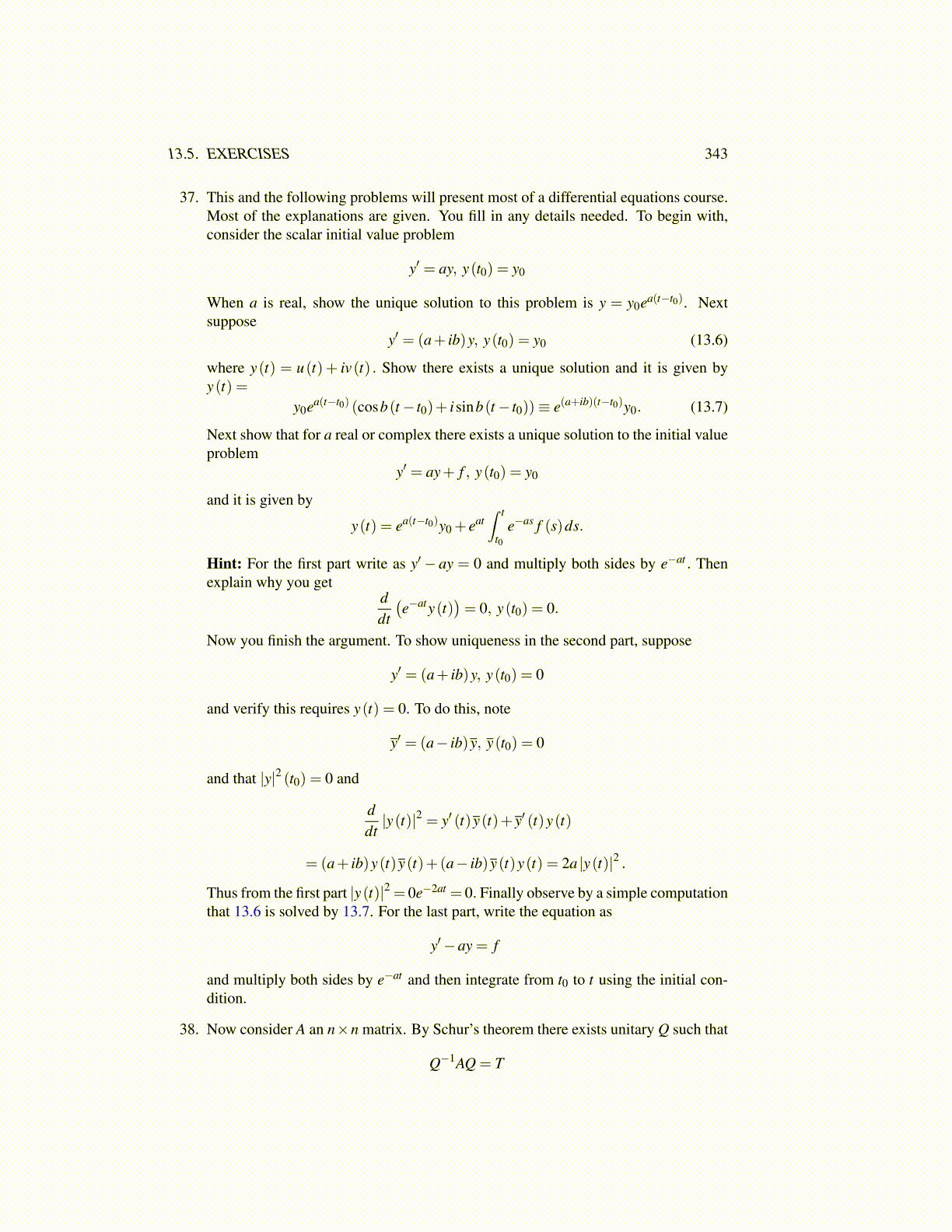
13.5. EXERCISES 343
37. This and the following problems will present most of a differential equations course.Most of the explanations are given. You fill in any details needed. To begin with,consider the scalar initial value problem
y′ = ay, y(t0) = y0
When a is real, show the unique solution to this problem is y = y0ea(t−t0). Nextsuppose
y′ = (a+ ib)y, y(t0) = y0 (13.6)
where y(t) = u(t) + iv(t) . Show there exists a unique solution and it is given byy(t) =
y0ea(t−t0) (cosb(t− t0)+ isinb(t− t0))≡ e(a+ib)(t−t0)y0. (13.7)
Next show that for a real or complex there exists a unique solution to the initial valueproblem
y′ = ay+ f , y(t0) = y0
and it is given by
y(t) = ea(t−t0)y0 + eat∫ t
t0e−as f (s)ds.
Hint: For the first part write as y′− ay = 0 and multiply both sides by e−at . Thenexplain why you get
ddt
(e−aty(t)
)= 0, y(t0) = 0.
Now you finish the argument. To show uniqueness in the second part, suppose
y′ = (a+ ib)y, y(t0) = 0
and verify this requires y(t) = 0. To do this, note
y′ = (a− ib)y, y(t0) = 0
and that |y|2 (t0) = 0 and
ddt|y(t)|2 = y′ (t)y(t)+ y′ (t)y(t)
= (a+ ib)y(t)y(t)+(a− ib)y(t)y(t) = 2a |y(t)|2 .
Thus from the first part |y(t)|2 = 0e−2at = 0. Finally observe by a simple computationthat 13.6 is solved by 13.7. For the last part, write the equation as
y′−ay = f
and multiply both sides by e−at and then integrate from t0 to t using the initial con-dition.
38. Now consider A an n×n matrix. By Schur’s theorem there exists unitary Q such that
Q−1AQ = T